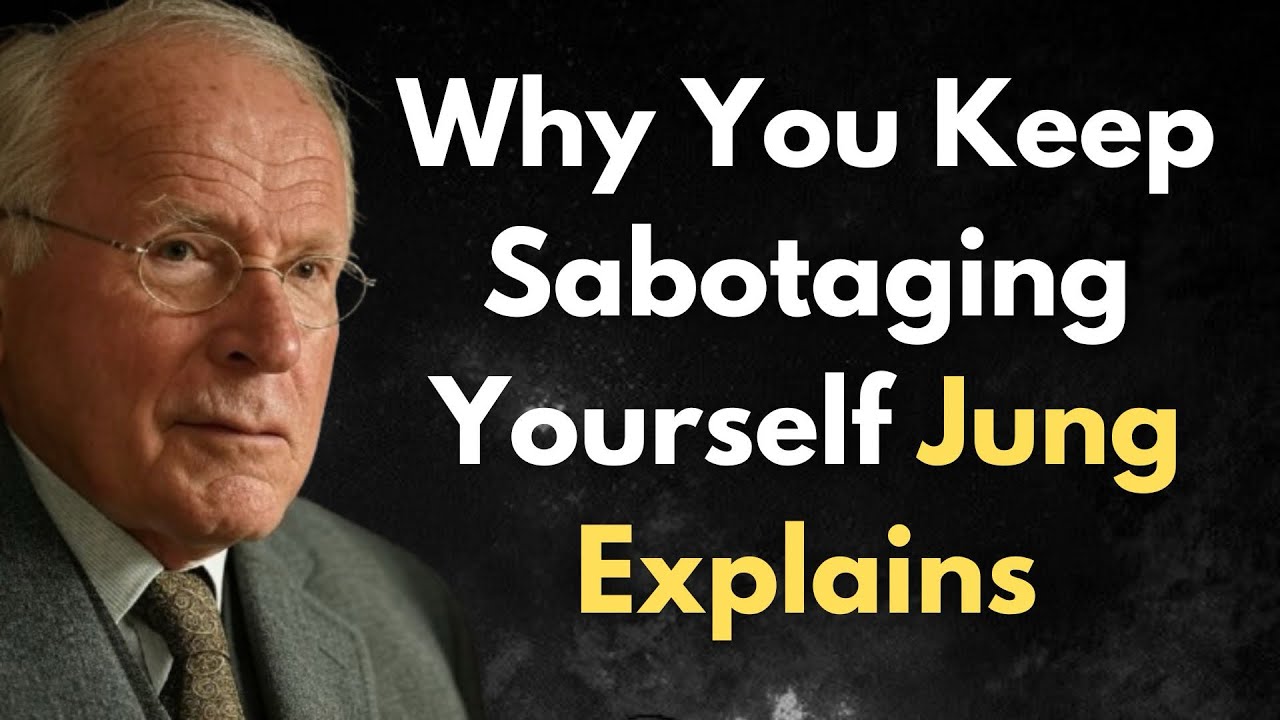The video examines self-sabotage through Carl Jung’s psychological theories, emphasizing that it stems from unconscious mechanisms, particularly the Shadow, which represents repressed aspects of ourselves. It encourages viewers to recognize and integrate these Shadow elements as a path to personal growth and transformation, offering practical techniques for self-reflection and understanding.
The video explores the concept of self-sabotage through the lens of Carl Jung’s psychological theories. It begins by highlighting the common experience of undermining one’s own progress, whether in career, health, or relationships. The narrator shares a personal story of committing to a healthier lifestyle only to regress into old habits, prompting a deeper inquiry into the reasons behind such self-destructive behaviors. The video aims to uncover the psychological roots of self-sabotage, emphasizing that it is not merely a matter of willpower but rather a complex interplay of unconscious mechanisms.
Carl Jung, a prominent psychologist, is introduced as the figure behind many revolutionary ideas in psychology, including the concepts of the personal and collective unconscious, archetypes, and the Shadow. The Shadow represents the parts of ourselves that we have disowned or repressed, which can lead to self-sabotaging behaviors. Jung famously stated that until we make the unconscious conscious, it will direct our lives. This insight is crucial for understanding how unconscious forces can work against our conscious desires, leading to patterns of self-destruction.
The video delves into the nature of self-sabotage from a Jungian perspective, explaining that it occurs when unconscious forces actively oppose our conscious intentions. Various forms of self-sabotage are discussed, such as procrastination, relationship conflicts, and career limitations. The underlying reason for these behaviors is linked to the Shadow, which contains both negative qualities and vital energies that, when disowned, can manifest in destructive ways. The video emphasizes that acknowledging and integrating these Shadow aspects is essential for personal growth and overcoming self-sabotage.
Jung’s concept of the wounded inner child and the formation of complexes is also explored, illustrating how unresolved childhood experiences can trigger self-sabotaging patterns in adulthood. The video explains that these patterns often serve as survival strategies developed in response to early experiences, but they can become detrimental when they persist into adulthood. The tension between our desire for growth and the fear of transformation is highlighted as a central theme in self-sabotage, suggesting that the ego resists change, even when it is positive.
Finally, the video offers practical techniques for recognizing and integrating Shadow material, such as dream analysis, active imagination, and self-reflection. It encourages viewers to approach their self-sabotaging behaviors not merely as obstacles but as opportunities for deeper self-understanding and integration. By embracing the complexity of the self and acknowledging both light and Shadow aspects, individuals can embark on a journey toward wholeness and authenticity, ultimately leading to personal transformation. The video concludes with a call to action for viewers to reflect on their own patterns of self-sabotage and consider the insights shared from Jung’s work.
